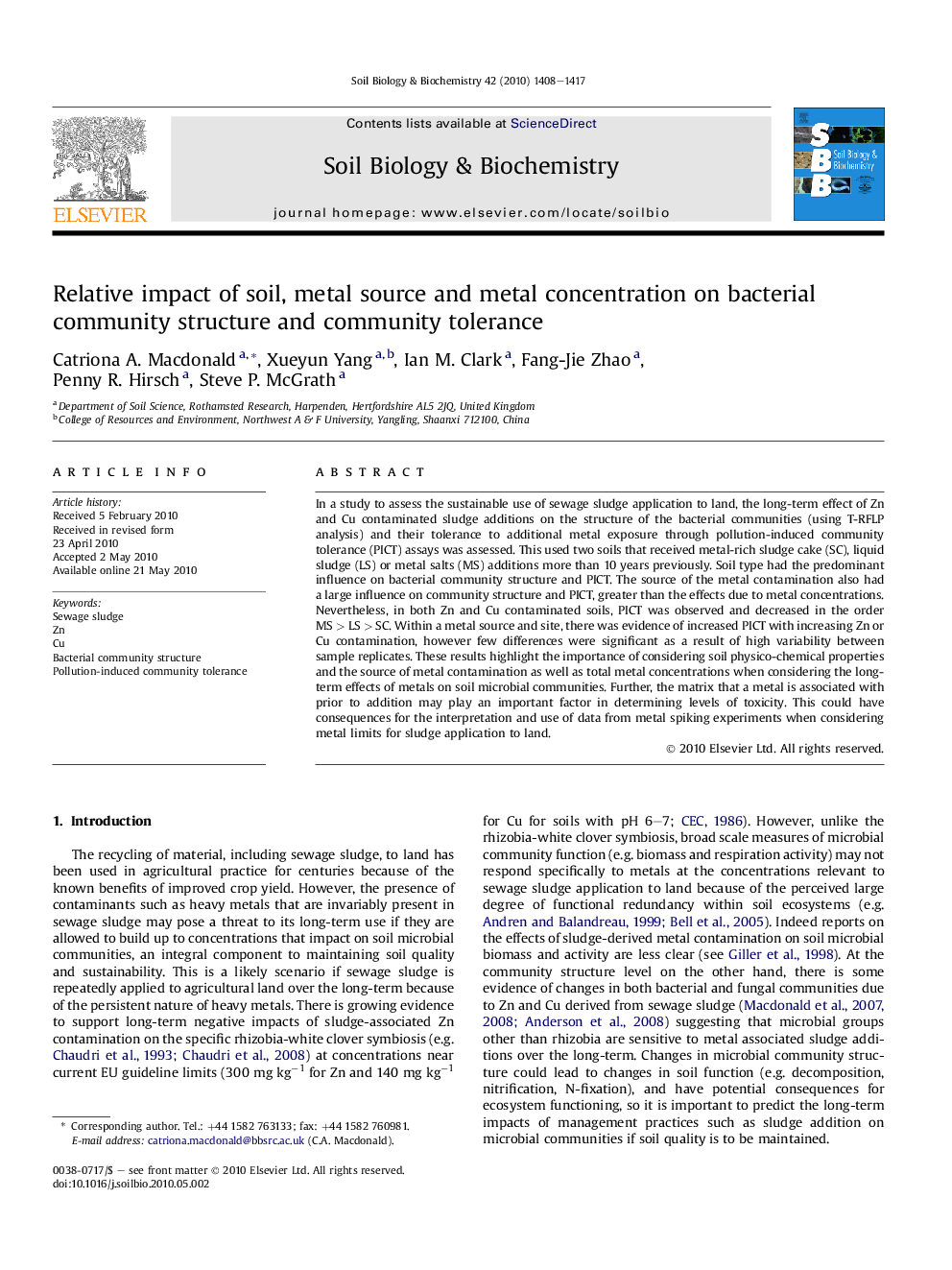| Article ID | Journal | Published Year | Pages | File Type |
|---|---|---|---|---|
| 10846109 | Soil Biology and Biochemistry | 2010 | 10 Pages |
Abstract
In a study to assess the sustainable use of sewage sludge application to land, the long-term effect of Zn and Cu contaminated sludge additions on the structure of the bacterial communities (using T-RFLP analysis) and their tolerance to additional metal exposure through pollution-induced community tolerance (PICT) assays was assessed. This used two soils that received metal-rich sludge cake (SC), liquid sludge (LS) or metal salts (MS) additions more than 10 years previously. Soil type had the predominant influence on bacterial community structure and PICT. The source of the metal contamination also had a large influence on community structure and PICT, greater than the effects due to metal concentrations. Nevertheless, in both Zn and Cu contaminated soils, PICT was observed and decreased in the order MSÂ >Â LSÂ >Â SC. Within a metal source and site, there was evidence of increased PICT with increasing Zn or Cu contamination, however few differences were significant as a result of high variability between sample replicates. These results highlight the importance of considering soil physico-chemical properties and the source of metal contamination as well as total metal concentrations when considering the long-term effects of metals on soil microbial communities. Further, the matrix that a metal is associated with prior to addition may play an important factor in determining levels of toxicity. This could have consequences for the interpretation and use of data from metal spiking experiments when considering metal limits for sludge application to land.
Related Topics
Life Sciences
Agricultural and Biological Sciences
Soil Science
Authors
Catriona A. Macdonald, Xueyun Yang, Ian M. Clark, Fang-Jie Zhao, Penny R. Hirsch, Steve P. McGrath,
